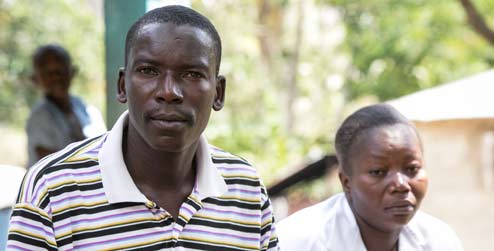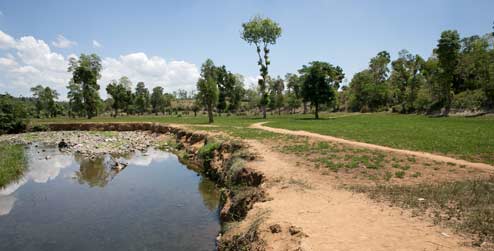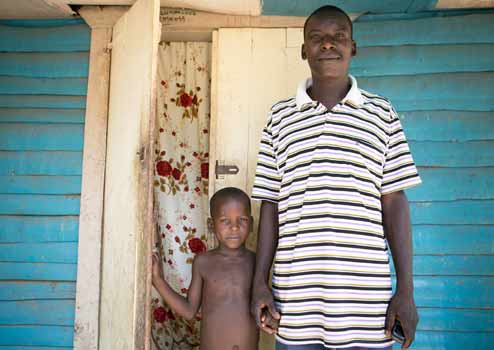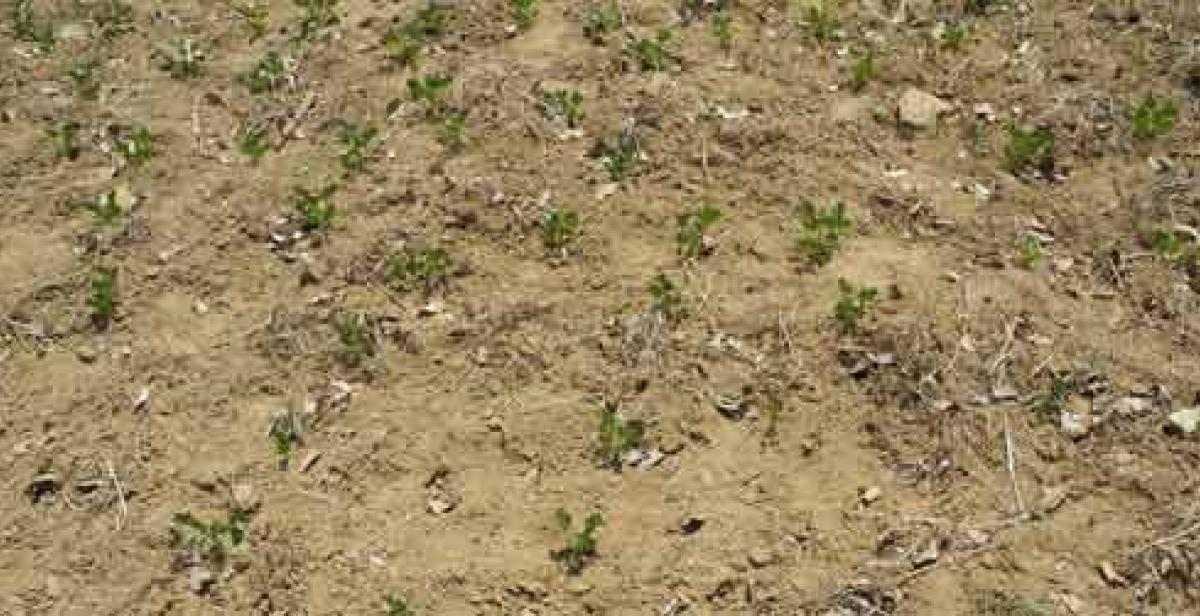Progressio's Environment Policy Officer, Lis Wallace, writes:
I've always been an avid baker. When I want to bake a cake, the first thing I do is open the cupboards and check that I have enough of the essential ingredients: flour, margarine, sugar or eggs. If you're an expert baker then you’ll know that some or all of these ingredients can be substituted, but please stick with me – it's the analogy that's important here.
There's no substitute for water
Producing food, whether baking a cake in Surrey or growing fruit and vegetables in rural Haiti, depends on us having enough of the right ingredients. When we're talking about being able to grow enough food for everybody to have enough to eat, ultimately the one essential ingredient for which there is no substitute is water.
As I saw in Haiti earlier this year, if small-scale farmers do not have enough water to grow food for their families to eat and to sell for an income, there is simply no alternative ingredient that will make crops grow.

Meet Oranus and Christemene. They live in Gens de Nantes, Haiti with their four children. Their home and the land that they have to grow food on is a ten minute walk away from the nearest river. It may not sound far, but that short distance has a big impact on the family's diet and wellbeing. As Oranus explained, "The distance between the crops and the river has a big impact on whether the crops thrive or survive. The peanuts growing directly next to the river are thriving, whilst the same crops growing only a five minute walk away are struggling to survive in the dry soil. Water is life, because without it we can't do anything."
800 million small-scale farmers need access to water
Oranus and Christemene are two of the world's estimated 800 million small-scale farmers. Small-scale farmers, the majority of whom are women, play a critical role in the global food system. Collectively, small-scale farmers support up to two billion people, or a third of humanity, and produce half of the world's food, rising to as much as 90% in Africa.
Sustainable access to sufficient water resources poses a major threat to food and nutrition security of small-scale farmers and is a barrier to agricultural production and improving rural livelihoods.

Water is an irreplaceable ingredient for food security and it is increasingly under stress both in terms of quantity and quality. Water scarcity already affects every continent. By 2025, 1.8 billion people will be living in countries or regions where water is scarce, and two-thirds of the world's population could struggle to have enough water. Water scarcity means that competition for water as a productive resource is intensifying and that the rural poor, especially women, are likely to be the most negatively affected.
Demand for water is set to increase
At the same time demand is set to increase. The world's population is projected to reach 9 billion by 2050 and the UN's Food and Agriculture Organisation predicts that in order to keep pace with population growth and rising incomes, food production will have to increase by 70%. Over the period to 2050 the world's water resources will have to support the agricultural systems that will feed and create livelihoods for an additional 2.7 billion people .
Agriculture accounts for 70% of global water consumption and up to 95% of consumption in some developing countries. Approximately 20% of cropland is under irrigation. The remaining 80% of arable land is rain-fed.
Climate change is a threat to rain-fed farming
Irrigated land is three to five times more productive than rain-fed land and irrigated agriculture currently contributes to 40% of the world's food production. Rain-fed agriculture produces the remaining 60% and is the dominant system of agricultural production for small-scale farmers. However, rain-fed agriculture, like the farm cultivated by Oranus and Christemene, is particularly vulnerable to irregular water supply.
Climate change and the increased frequency and intensity of extreme events such as droughts and floods are contributing to water scarcity and can have a devastating impact on harvests. The publication of the latest Intergovernmental Panel on Climate Change (IPCC) report in September is a sobering reminder of the impacts that climate change is and will increasingly have on the global water cycle.

So what can be done? Smallholder farmers need to have better access to the water they need for their livelihoods. Progressio wants to see a target for increasing smallholder access to irrigation and other techniques, such as rainwater harvesting and water conservation, in order to increase the productivity and resilience of small-scale farmers.
Let's make future development 'waterproof'
Progressio wants to see access to water for small-scale farming and livelihoods given much more attention by policy-makers. When the Millenium Development Goals expire in 2015, we want to make sure that the post-2015 framework for development is truly 'waterproof'. That is to say, the new framework has to acknowledge the vital role that water has in securing livelihoods and overcoming poverty. It should set targets for providing smallholder agriculture with access to water.
Lis Wallace is Progressio's Environment Policy Officer. Lis recently returned from the Budapest Water Summit where she was lobbying for water to be a priority on the Post-2015 agenda. Read Lis's blogs from Budapest.
All photographs were taken in Gens de Nantes, Haiti. (©Fran Afonso/Progressio 2013)
Photo 1: Peanuts struggling to grow in the dry earth ten minutes walk away from the nearest water source.
Photo 2: Oranus (left) is a small scale farmer and Christemene (right) is a nurse. They are normally able to grow their own food from January to April.
Photo 3: The river that Oranus and Christemene rely on for all their water needs.
Photo 4: Oranus and his son outside their home in Gens de Nantes.



